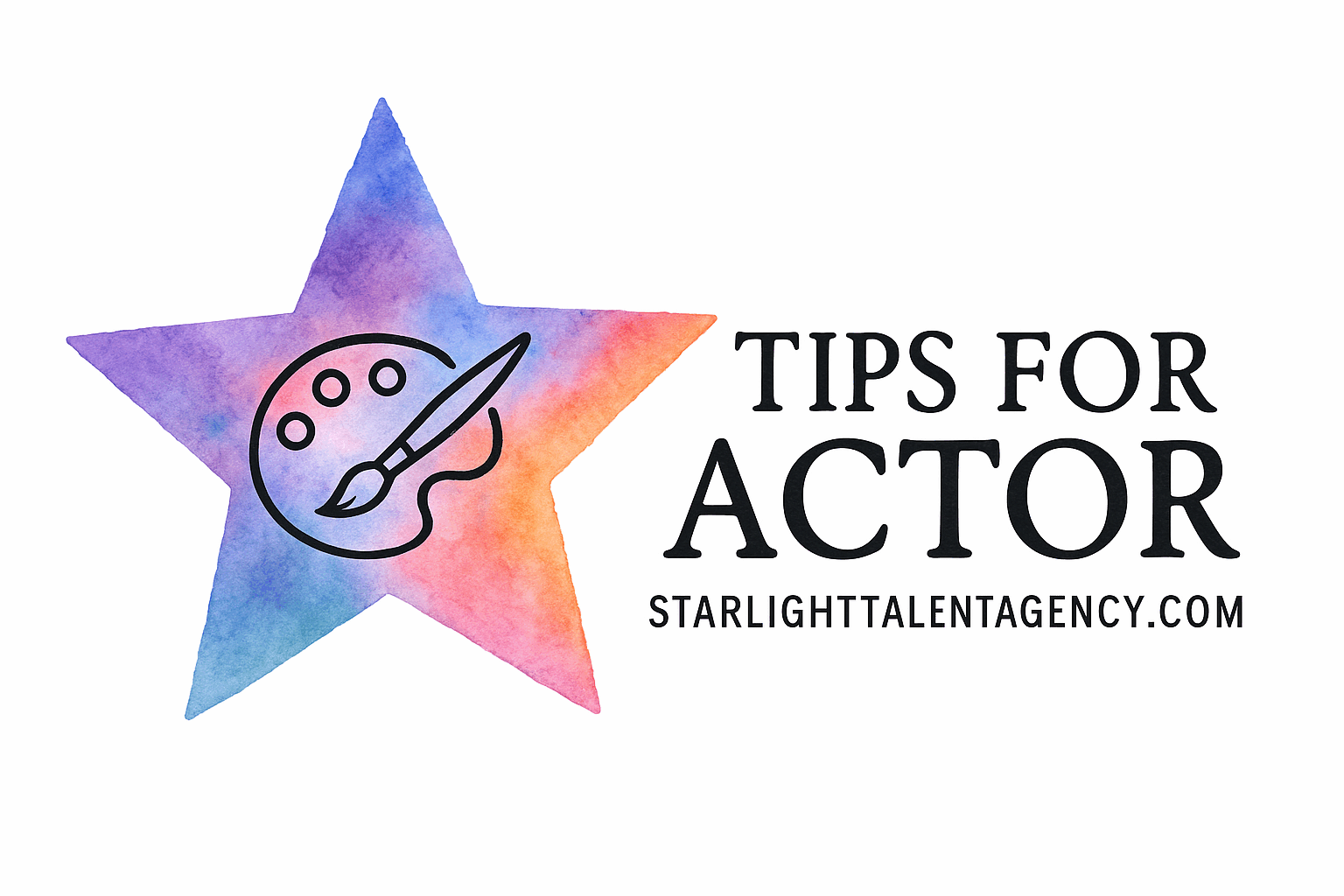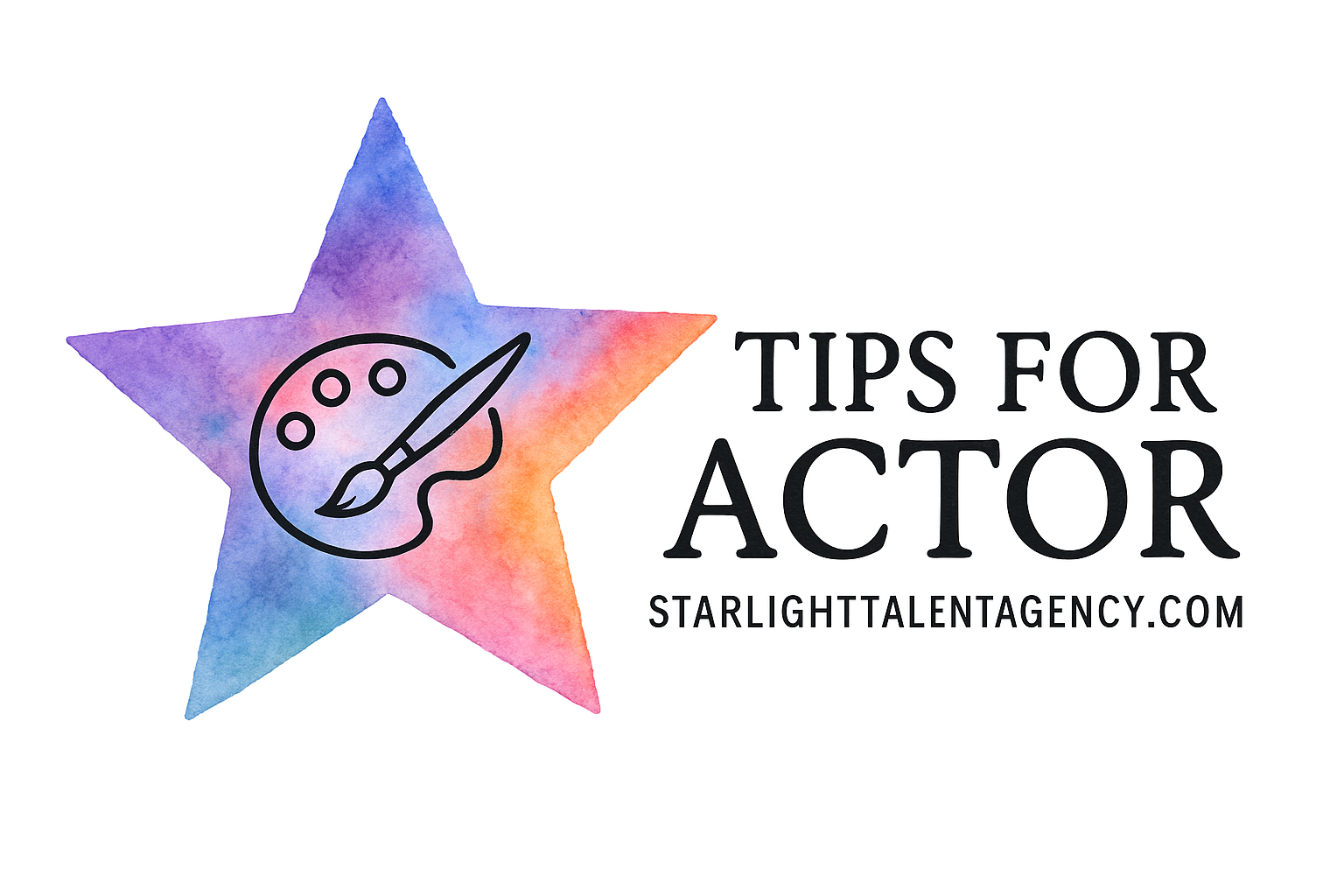Introduction: Why Your Showreel Matters
Your acting showreel is more than just a video compilation — it’s your visual calling card in the entertainment industry. Think of it as your cinematic résumé. When casting directors are scanning hundreds of submissions, your showreel is what decides whether you get that callback.
At Starlight Talent Agency, we’ve seen countless talented actors lose opportunities because of poorly structured or outdated reels. That’s why mastering the process is vital. Whether you’re refining your reel or starting from scratch, these 8 Coaching Tips for Actor Building a Showreel will help you craft a professional, memorable showcase of your talent.
Understanding What Makes a Great Showreel
The Role of a Showreel in an Acting Career
A showreel does for actors what a portfolio does for designers — it gives a snapshot of what you can do. It’s your first impression before an audition, helping directors gauge your screen presence, acting style, and personality.
When paired with proper audition preparation basics, your showreel becomes a powerful career asset.
Common Mistakes Actors Make in Their Showreels
Common missteps include:
- Overloading the reel with every clip ever filmed.
- Including poor-quality footage with bad lighting or sound.
- Forgetting to tailor it to your casting type.
A focused, clean, and emotionally engaging showreel instantly communicates professionalism — and that’s what makes you stand out.
Coaching Tip #1: Know Your Type and Strengths
Identifying Your Acting Brand
Before filming or editing a single clip, define your acting brand. What roles do you naturally gravitate toward? What archetypes do casting directors frequently assign to you?
Understanding this comes from self-awareness and sometimes from acting coaching sessions. A professional coach can help you find your strongest traits and help you highlight them authentically in your reel.
Choosing Roles That Represent You Best
Pick scenes that reflect your strengths. If you excel in emotional storytelling, focus on dramatic pieces. If you’ve got comedic timing, show it off! Think of this as character development — a theme you can explore further at Character Development for Actors.

Coaching Tip #2: Keep It Short and Impactful
The Ideal Length for a Professional Showreel
In today’s fast-paced casting world, less is more. Keep your reel between 90 seconds and 3 minutes. Casting directors typically decide within the first 30 seconds whether you’re right for the role.
Highlighting Only Your Best Moments
Start with your strongest clip — not necessarily your newest one. Open with impact and maintain energy throughout. For more insights on making your first impression count, check out Advanced Audition Skills.
Coaching Tip #3: Prioritize Quality Over Quantity
Why Production Value Matters
Even great acting can be overshadowed by low-quality production. Crisp visuals, balanced audio, and thoughtful camera work enhance your credibility.
This aligns with the on-camera discipline discussed in On-Camera Acting — because how you look and sound on screen defines how you’re remembered.
Working with Professional Filmmakers
If you can, collaborate with a cinematographer or acting reel production company. A professional shoot elevates your reel, conveying that you take your craft seriously — a key factor in long-term career growth.
Coaching Tip #4: Showcase Versatility, Not Confusion
Balancing Range Without Losing Consistency
Show range — but make it cohesive. Your reel should demonstrate variety without feeling like a random mash-up. If you’re versatile, show that through tone and emotion, not by switching from slapstick to thriller within seconds.
Examples of Smart Scene Selection
Pair a heartfelt drama scene with something more conversational. Then finish with a subtle comedic beat. Each transition should feel natural. The goal is to show flexibility, a skill we expand on in Acting Flexibility.
Coaching Tip #5: Include Self-Tape Scenes Strategically
Using Self-Tapes to Demonstrate Skill
If you lack professional footage, high-quality self-tape scenes can fill the gap. These clips reveal your ability to deliver authentic performances without major production. Learn how to record top-tier tapes at Self-Tape Mastery.
When to Add Self-Tape Clips
Include self-tapes if:
- You’re early in your career and lack film credits.
- You’re showcasing a new skill (accent, dialect, emotional depth).
Just ensure the setup meets the standards outlined in Self-Tape Setup.
Coaching Tip #6: Master Scene Transitions and Flow
Editing Techniques to Keep Viewers Engaged
Transitions should feel smooth, like a story rather than a collage. Avoid harsh cuts or sudden tone changes. For pacing, think of the natural rhythm of a good scene work class — each beat leads organically to the next.
How to End Your Showreel Strongly
End on a memorable note: a line that resonates, a look that lingers. This helps leave a lasting impression, similar to what you learn through Stage Presence training.
Coaching Tip #7: Get Professional Feedback
Working with Acting Coaches for Objective Input
Getting an outside perspective is crucial. Work with trusted mentors or agencies like Starlight Talent Agency for unbiased critiques.
Professional coaching sessions can identify weaknesses you might overlook — similar to lessons from Coaching Tips for Actor.
Revising Based on Constructive Criticism
Take feedback gracefully. Every edit or suggestion fine-tunes your reel into a sharper, more marketable product. Remember: growth happens through revision.
Coaching Tip #8: Update Your Showreel Regularly
Keeping Your Footage Fresh and Relevant
Your reel should evolve as you do. As you gain new experiences, update your footage to reflect your current look, skills, and emotional depth.
Regular updates show casting directors that you’re active and continuously improving — a mindset explored in Career Mindset.
How Often Should You Update?
Reassess every 6 to 12 months, or after any standout role. Even small updates — a new clip, better sound, or improved editing — keep your reel relevant.
Conclusion: Your Showreel is Your Acting Resume
Your showreel is your visual résumé — your silent audition. It tells your story, sells your talent, and opens doors before you walk into the room.
Apply these 8 Coaching Tips for Actor Building a Showreel and pair them with ongoing training in Audition Preparation and Career Growth to create a lasting professional impact.
FAQs
1. How long should an actor’s showreel be?
Aim for 90 seconds to 3 minutes — long enough to show range, short enough to keep attention.
2. Can I include self-tape clips in my showreel?
Yes, but only high-quality tapes that meet Self-Tape Acting standards.
3. How often should I update my showreel?
Every 6–12 months or after a significant project.
4. Should I include background or extra work?
No. Include scenes where you have dialogue and screen presence.
5. How do I make my reel stand out?
Strong acting, smooth editing, and visual clarity. Reinforce these skills through Expressive Acting techniques.
6. What if I don’t have much footage yet?
Start with self-tapes and monologues — learn to craft them with Acting Prep.
7. Do casting directors watch the entire reel?
Most make decisions within the first minute — so begin with your most captivating scene.

